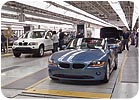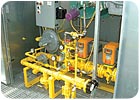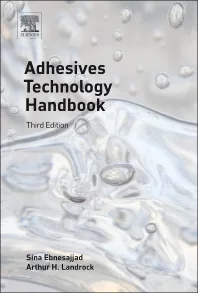Green Finishing
The use of landfill gas in BMW's Greer, S.C. plant is creating the world's first "green" paint shop.

BMW Manufacturing Co., LLC, Greer, S.C., is no stranger to environmental initiatives. The company is a charter member of the U.S. Environmental Protection Agency's (EPA) National Environmental Achievement Track, which recognizes companies for their environmental stewardship and performance. It is also a member of the South Carolina Environmental Excellence Program and is on the Dow Jones Sustainability Group Index, which rates environmentally friendly companies. When the EPA approached BMW Manufacturing in 2000 about operating a large, on-site cogeneration system using recycled methane gas generated by the Palmetto Landfill near Spartanburg, S.C., BMW Manufacturing readily agreed. A pipeline was constructed the nine miles from the landfill to the plant, and the cogeneration system successfully began producing electricity for the facility in 2003. It was an environmentally responsible project.
But the company is also in business to make a profit. Like other companies that rely heavily on natural gas for manufacturing operations, BMW Manufacturing has been concerned about the volatility of natural gas prices over the last several years. In late 2004, the plant assigned a team to identify energy conservation strategies, particularly for its paint shop, which was the largest overall consumer of energy in the facility. The team worked closely with Dürr Systems, Inc., Plymouth, Mich., which had supplied the original process equipment when the paint shop was built in 1994. A comprehensive energy audit revealed that the plant had more landfill gas (LFG) at its disposal - enough to completely offset the more expensive natural gas used in its paint bake ovens and regenerative thermal oxidizer. The catch? No other plant had ever used LFG directly in the process equipment of a production facility. BMW Manufacturing would be breaking new ground.

"In addition to the financial commitment, BMW was concerned with the technical aspects of the project," says Gordon Harbison, a certified energy manager at Dürr Systems. "We had to overcome some production fears that the landfill gas would affect the operation or quality of the paint shop."
BMW engineers traveled with Dürr to evaluate prospective equipment, and redundant backup systems were developed to automatically supplement the equipment with natural gas in case of any fluctuations in the LFG supply. The backup systems mix natural gas and compressed air to make a synthetic fuel with the same low-BTU, high-volume characteristics of LFG so that no equipment modifications are needed if a gas change occurs. During a landfill gas supply interruption, the first backup system will automatically and seamlessly supplement the system. If for some reason the first backup system fails, the second backup system will take over. And if for some reason the second backup system fails, the plant can manually valve back to natural gas.
While the entire project required a leap of faith for BMW Manufacturing, the plant trusted the advice and engineering provided by Dürr.
"As the world's first green paint shop, they couldn't ask us, ‘Where have you done this before?'" notes Harbison. "But we were confident in the project and in our experience, and they trusted us enough to say, ‘Okay, if you're confident, and we implement these safeguards and have checkpoints, we'll sign up.' It was a very forward-thinking decision."
According to Mr. Dara Leadford, project manager for BMW Manufacturing, the plant saw expanding its use of landfill gas as a continuation of its environmental stewardship philosophy. But the effects of Hurricane Katrina on the natural gas market in 2005 sealed the deal.
"We were already working on this project when Hurricane Katrina hit. When gas prices went up more than $4 per unit of heat energy overnight, the project really made sense financially. That situation certainly cut some time out of the approval process," says Leadford.
"Several of us wear pagers that tell us when the backup system goes on, which means we have to monitor the situation. But the two times that the backup system had to kick in, it went smoothly - the ovens couldn't tell the difference, and neither could the paint shop employees. After a few seconds to maybe a minute, the LFG flow regulated itself, and the backup system turned itself off. There was no effect on the plant," says Leadford.
The company plans to have all of its ovens, its regenerative thermal oxidizer and a boiler in the power house operating on LFG by September 1 , 2006 - if not sooner.
"Because this is such a production-critical area of the plant, we're taking the project slowly. I'd like to expedite the changeover by four to six weeks if possible, but we'll definitely have everything on landfill gas by September 1," says Leadford.
The plant has already begun seeing benefits. In May alone, it saved $19,000 in fuel costs with just the three burners on-line. With the current natural gas prices, the company expects to see a payback in 1.6 or 1.7 years instead of the 2 years it projected previously. BMW Manufacturing also anticipates a reduction of more than 17,000 tons per year of CO2 emissions once all of the planned paint shop equipment is operating on LFG.
Ultimately, the entire project was a success for everyone involved. "So often with environmental projects, companies only think about the expense. From the very beginning of this project, we looked at it from both a business standpoint and an environmental standpoint, and it made sense both ways. This was truly a win-win situation," says Leadford.
For more information about using landfill gas in production operations, contact Dürr Systems Inc. at gordon.harbison@durrusa.com or visit www.durr.com.
BMW Manufacturing Co. can be reached at dara.leadford@bmwmfg.com or bunny.richardson@bmwmfg.com, or online at www.bmwusfactory.com.
For information on reprints of this article, contact Jill DeVries at devriesj@bnpmedia.com.

BMW Manufacturing Co., LLC, Greer, S.C., is no stranger to environmental initiatives. The company is a charter member of the U.S. Environmental Protection Agency's (EPA) National Environmental Achievement Track, which recognizes companies for their environmental stewardship and performance. It is also a member of the South Carolina Environmental Excellence Program and is on the Dow Jones Sustainability Group Index, which rates environmentally friendly companies. When the EPA approached BMW Manufacturing in 2000 about operating a large, on-site cogeneration system using recycled methane gas generated by the Palmetto Landfill near Spartanburg, S.C., BMW Manufacturing readily agreed. A pipeline was constructed the nine miles from the landfill to the plant, and the cogeneration system successfully began producing electricity for the facility in 2003. It was an environmentally responsible project.
But the company is also in business to make a profit. Like other companies that rely heavily on natural gas for manufacturing operations, BMW Manufacturing has been concerned about the volatility of natural gas prices over the last several years. In late 2004, the plant assigned a team to identify energy conservation strategies, particularly for its paint shop, which was the largest overall consumer of energy in the facility. The team worked closely with Dürr Systems, Inc., Plymouth, Mich., which had supplied the original process equipment when the paint shop was built in 1994. A comprehensive energy audit revealed that the plant had more landfill gas (LFG) at its disposal - enough to completely offset the more expensive natural gas used in its paint bake ovens and regenerative thermal oxidizer. The catch? No other plant had ever used LFG directly in the process equipment of a production facility. BMW Manufacturing would be breaking new ground.

Designing a Feasible System
The company collaborated with Dürr to devise technology solutions that would ensure an uninterrupted supply of power to the critical pieces of production equipment with a reasonable return on investment. A 20-year contract with Ameresco for the LFG helped ensure that BMW Manufacturing would see substantial savings from the switch to LFG alone. However, the required modifications to the process equipment - including retrofitting 23 burners and running a 1500-foot supply pipe to the paint shop - were substantial. BMW conservatively estimated a two-year payback."In addition to the financial commitment, BMW was concerned with the technical aspects of the project," says Gordon Harbison, a certified energy manager at Dürr Systems. "We had to overcome some production fears that the landfill gas would affect the operation or quality of the paint shop."
BMW engineers traveled with Dürr to evaluate prospective equipment, and redundant backup systems were developed to automatically supplement the equipment with natural gas in case of any fluctuations in the LFG supply. The backup systems mix natural gas and compressed air to make a synthetic fuel with the same low-BTU, high-volume characteristics of LFG so that no equipment modifications are needed if a gas change occurs. During a landfill gas supply interruption, the first backup system will automatically and seamlessly supplement the system. If for some reason the first backup system fails, the second backup system will take over. And if for some reason the second backup system fails, the plant can manually valve back to natural gas.
While the entire project required a leap of faith for BMW Manufacturing, the plant trusted the advice and engineering provided by Dürr.
"As the world's first green paint shop, they couldn't ask us, ‘Where have you done this before?'" notes Harbison. "But we were confident in the project and in our experience, and they trusted us enough to say, ‘Okay, if you're confident, and we implement these safeguards and have checkpoints, we'll sign up.' It was a very forward-thinking decision."
According to Mr. Dara Leadford, project manager for BMW Manufacturing, the plant saw expanding its use of landfill gas as a continuation of its environmental stewardship philosophy. But the effects of Hurricane Katrina on the natural gas market in 2005 sealed the deal.
"We were already working on this project when Hurricane Katrina hit. When gas prices went up more than $4 per unit of heat energy overnight, the project really made sense financially. That situation certainly cut some time out of the approval process," says Leadford.
Bringing LFG On-Line
The equipment modifications were implemented during a planned four-week shutdown in December 2005 and January 2006. On May 1, 2006, the first oven (including three burners) was switched from natural gas to LFG. While one of the backup systems has had to kick in twice due to excess air in the LFG pipeline - once in May and once in June - both instances only lasted seconds, and the gas flow to the paint shop was uninterrupted both times."Several of us wear pagers that tell us when the backup system goes on, which means we have to monitor the situation. But the two times that the backup system had to kick in, it went smoothly - the ovens couldn't tell the difference, and neither could the paint shop employees. After a few seconds to maybe a minute, the LFG flow regulated itself, and the backup system turned itself off. There was no effect on the plant," says Leadford.
The company plans to have all of its ovens, its regenerative thermal oxidizer and a boiler in the power house operating on LFG by September 1 , 2006 - if not sooner.
"Because this is such a production-critical area of the plant, we're taking the project slowly. I'd like to expedite the changeover by four to six weeks if possible, but we'll definitely have everything on landfill gas by September 1," says Leadford.
The plant has already begun seeing benefits. In May alone, it saved $19,000 in fuel costs with just the three burners on-line. With the current natural gas prices, the company expects to see a payback in 1.6 or 1.7 years instead of the 2 years it projected previously. BMW Manufacturing also anticipates a reduction of more than 17,000 tons per year of CO2 emissions once all of the planned paint shop equipment is operating on LFG.
Ultimately, the entire project was a success for everyone involved. "So often with environmental projects, companies only think about the expense. From the very beginning of this project, we looked at it from both a business standpoint and an environmental standpoint, and it made sense both ways. This was truly a win-win situation," says Leadford.
For more information about using landfill gas in production operations, contact Dürr Systems Inc. at gordon.harbison@durrusa.com or visit www.durr.com.
BMW Manufacturing Co. can be reached at dara.leadford@bmwmfg.com or bunny.richardson@bmwmfg.com, or online at www.bmwusfactory.com.
For information on reprints of this article, contact Jill DeVries at devriesj@bnpmedia.com.
SIDEBAR: Project Facts
- The energy provided by recycled methane gas supplies BMW Manufacturing Co. with 53% of its energy needs through the cogeneration system.
- To use the gas, a 9.5-mile pipeline was built from Palmetto Landfill to BMW Manufacturing Co. BMW's project is unique in the fact that most other landfill gas projects create energy at the landfill and send through wires. BMW pipes gas to drive generators and production equipment.
- Landfills are the largest manmade methane source in the U.S. Methane is produced as trash decomposes. When released into the air, it is a greenhouse gas and contributes to local smog conditions.
- By recycling methane gas, BMW is able to improve local air quality by lowering regional emissions of greenhouse gases (methane and carbon dioxide).
- Ameresco (www.ameresco.com) designed, built and owns the pipeline, gas processing and gas compression facilities, as well as manages the overall operations of the project.
- Waste Management (www.wastemanagement.com), which owns and operates the Palmetto Landfill, has been developing landfill gas-to-energy projects for more than 15 years and currently supplies landfill gas to more than 100 gas-to-energy projects in 21 states.
- BMW Manufacturing is the first company in the world to use "green" energy to fuel its painting facility.
- The paint shop is the largest consumer of energy within the factory.
- Landfill gas is used to fuel 23 paint shop oven burners and to provide indirect heat for the area.
- The use of methane from the landfill gas project greatly reduces the paint shop's reliance on natural gas and better uses the previously untapped methane.
- BMW's original landfill gas-to-energy project reduced carbon dioxide emissions by more than 60,000 tons per year. The paint shop project will reduce carbon dioxide emissions by an additional 17,000+ tons per year.
Links
Looking for a reprint of this article?
From high-res PDFs to custom plaques, order your copy today!






